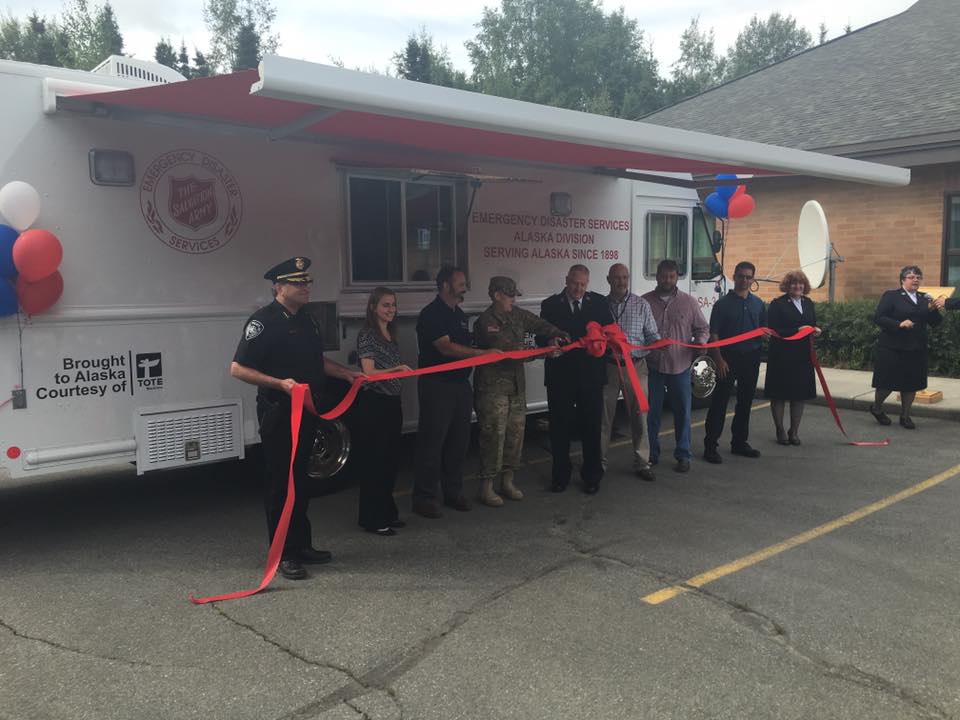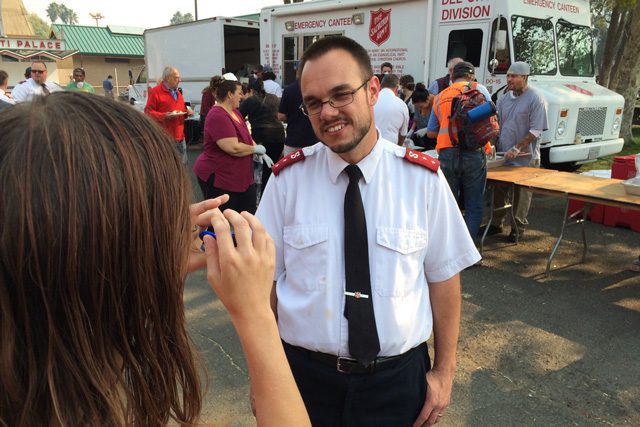by Stacy Howard –
Stacy Howard is the community relations director for the Northwest Division; she served as the public information officer (PIO) in Haiti from March 1 – 22. This is an excerpt from her report on the experience, which is available in full on Facebook at https://tiny.cc/91f1x
Although I’d read the reports, seen pictures and video, heard the stories and researched The Salvation Army’s history in Haiti, I didn’t realize the true depth and heart of The Salvation Army until I was deployed as PIO for the Army’s World Service Office in Haiti.
Flying into the country, nothing seemed unusual until the plane hit 500 feet, when the truth became evident—it was devastation.
Within a month after the Jan. 12 earthquake, workers had cleared most of the main roads in Port-au-Prince, but debris remains on the roadsides, and collapsed buildings are too dangerous to attempt cleanup. In some areas, two buildings stand while 20 around them are crumbled. Some locations sustained only minor damage but, as a whole, the capital city and many small towns are destroyed. Fortunately, The Salvation Army and other non-government and government organizations are there to help rebuild and restore.
The children/the hope
Exhibiting more hope than most people I’ve ever met, the children of Haiti are resilient and grateful for what they have—and don’t complain about what they lack. I quickly saw that these kids didn’t have much before the quake, so many aren’t seeing a drastic change in their lifestyle. It is sad, but it also allows them to smile at the world and see they can still thrive—if given the opportunity.
The Salvation Army will continue to provide opportunities—as they have for 50 years–operating more than 50 schools throughout the country, along with several children’s homes. The Salvation Army’s schools in Port-au-Prince were among the first to resume classes less than two months after the disaster.
For children in school, The Salvation Army, World Concern and UNICEF have partnered to create a safe activity center inside the camp, where kids can participate in arts and crafts, sports and music. They also receive meals at the site.
The next step
With the rainy season imminent, The Salvation Army is working with the Haitian government to build transitional housing. It is a long process but one that is well on its way to relocating people to places where they are safe and can start new lives.
As long as allowed, the Army will distribute food and supplies. International staff will continue working closely with local staff to meet the needs of the country. Local Haitians have been and will continue to be hired in order to rebuild the economy.
The personal impact
Every day people ask about my experience in Haiti. How was it? What was it like? When was I ready to come home? These are questions I’m still asking myself and I don’t yet have the answers—and now realize I might never have. I’m okay with that.
I know that serving in Haiti changed me; it gave me a new perspective on many things. A part of my heart will always be with the people of Haiti. They showed me a strength I didn’t know existed and proved that love and hope can still grow out of chaos and turmoil.
As for The Salvation Army, many people are familiar with the red kettles and thrift stores. Some know it is the world’s largest social service organization. What many don’t know is that it’s a first responder to disasters worldwide. The officers and staff go in, take care of others and do it quietly and with humility. As an employee, I am prouder than ever to be a part of The Salvation Army—a place and a people others can turn to and expect change.












